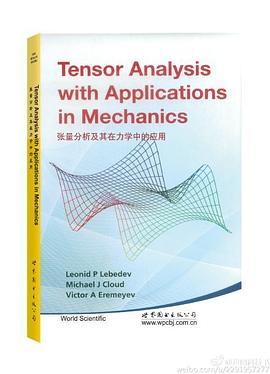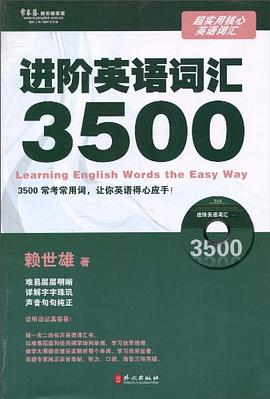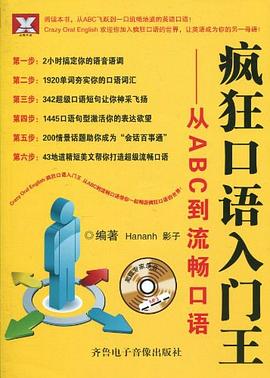

具體描述
這是一部簡明清晰,並且自稱體係的有關張量、張量域及其應用的教材。書中囊括瞭學習有關張量應用的必需的所有內容,以及闡明瞭這些材料如何應用在力學中,也包括彈性綫性理論基礎和彈性殼體。前四章錶述瞭所有的主體結果,剩餘的部分教我們如何將這些結果應用於微分幾何和連續力學中的各種情況中,如彈性體、彈性闆和彈性殼體。在這個版本中,每章末都提供瞭練習和問題解答提示和答案。擴展附錄部分以手冊的形式綜述瞭書中包括的所有重要公式。
著者簡介
圖書目錄
Foreword
Preface
Tensor Analysis
1.Preliminaries
1.1 The Vector Concept Revisited
1.2 A First Look at Tensors
1.3 Assumed Background
1.4 More on the Notion of a Vector
1.5 Problems
2.Transformations and Vectors
2.1 Change of Basis
2.2 Dual Bases
2.3 Transformation to the Reciprocal Frame
2.4 Transformation Between General Frames
2.5 Covariant and Contravariant Components
2.6 The Cross Product in Index Notation
2.7 Norms on the Space of Vectors
2.8 Closing Remarks
2.9 Problems
3.Tensors
3.1 Dyadic Quantities and Tensors
3.2 Tensors From an Operator Viewpoint
3.3 Dyadic Components Under Transformation
3.4 More Dyadic Operations
3.5 Properties of Second—Order Tensors
3.6 Eigenvalues and Eigenvectors of a Second—Order Symmel ricTensor
3.7 The Cayley—Hamilton Theorem
3.8 Other Properties of Second—Order Tensors
3.9 Extending the Dyad Idea
3.10 Tensors of the Fourth and Higher Orders
3.11 Functions of Tensorial Arguments
3.12 Norms for Tensors, and Some Spaces
3.13 Differentiation of Tensorial Functions
3.14 Problems
4.Tensor Fields
4.1 Vector Fields
4.2 Differentials and the Nabla Operator
4.3 Differentiation of a Vector Function
4.4 Derivatives of the Frame Vectors
4.5 Christoffel Coefficients and their Properties
4.6 Covariant Differentiation
4.7 Covariant Derivative of a Second—Order Tensor
4.8 Differential Operations
4.9 Orthogonal Coordinate Systems
4.10 Some Formulas oflntegration
4.11 Problems
5.Elements of Differential Geometry
5.1 Elementary Facts from the Theory of Curves
5.2 The Torsion of a Curve
5.3 Frenet—Serret Equations
5.4 Elements of the Theory of Surfaces
5.5 The Second Fundamental Form of a Surface
5.6 Derivation Formulas
5.7 Implicit R,epresentation of a Curve; Contact of Curves
5.8 Osculating Paraboloid
5.9 The Principal Curvatures of a Surface
5.10 Surfaces of Revolution
5.11 Natural Equations of a Curve
5.12 A Word About Rigor
5.13 Conclusion
5.14 Problems
Applications in Mechanics
6.Linear Elasticity
6.1 Stress Tensor
6.2 StrainTensor
6.3 Equation of Motion
6.4 Hooke's Law
6.5 Eqrulibrium Equations in Displacements
6.6 Boundary Conditions and Boundary Value Problems
6.7 Equilibrium Equations in Stresses
6.8 Uniqueness of Solution for the Boundary Value Problems of Elasticity
6.9 Betti's Reciprocity Theorem
6.10 Muumum Total Energy Principle
6.11 Ritz's Method
6.12 Rayleigh's Variational Principle
6.13 Plane Waves
6.14 Plane Problems of Elasticity
6.15 Problems
7.Linear Elastic Shells
7.1 Some Useful Formulas of Surface Theory
7.2 Kinematics in a Neighborhood of ∑
7.3 Shell Eqrulibrium Equations
7.4 Shell Deformation and Strains; Kirchhoff's Hypotheses
7.5 Shell Energy
7.6 Boundary Conditions
7.7 A Few Remarks on the Kirchhoff—Love Theory
7.8 PlateTheory
7.9 On Non—Classical Theories of Plates and Shells
Appendix A Formulary
Appendix B Hints and Answers
Bibliography
Index
· · · · · · (收起)
Preface
Tensor Analysis
1.Preliminaries
1.1 The Vector Concept Revisited
1.2 A First Look at Tensors
1.3 Assumed Background
1.4 More on the Notion of a Vector
1.5 Problems
2.Transformations and Vectors
2.1 Change of Basis
2.2 Dual Bases
2.3 Transformation to the Reciprocal Frame
2.4 Transformation Between General Frames
2.5 Covariant and Contravariant Components
2.6 The Cross Product in Index Notation
2.7 Norms on the Space of Vectors
2.8 Closing Remarks
2.9 Problems
3.Tensors
3.1 Dyadic Quantities and Tensors
3.2 Tensors From an Operator Viewpoint
3.3 Dyadic Components Under Transformation
3.4 More Dyadic Operations
3.5 Properties of Second—Order Tensors
3.6 Eigenvalues and Eigenvectors of a Second—Order Symmel ricTensor
3.7 The Cayley—Hamilton Theorem
3.8 Other Properties of Second—Order Tensors
3.9 Extending the Dyad Idea
3.10 Tensors of the Fourth and Higher Orders
3.11 Functions of Tensorial Arguments
3.12 Norms for Tensors, and Some Spaces
3.13 Differentiation of Tensorial Functions
3.14 Problems
4.Tensor Fields
4.1 Vector Fields
4.2 Differentials and the Nabla Operator
4.3 Differentiation of a Vector Function
4.4 Derivatives of the Frame Vectors
4.5 Christoffel Coefficients and their Properties
4.6 Covariant Differentiation
4.7 Covariant Derivative of a Second—Order Tensor
4.8 Differential Operations
4.9 Orthogonal Coordinate Systems
4.10 Some Formulas oflntegration
4.11 Problems
5.Elements of Differential Geometry
5.1 Elementary Facts from the Theory of Curves
5.2 The Torsion of a Curve
5.3 Frenet—Serret Equations
5.4 Elements of the Theory of Surfaces
5.5 The Second Fundamental Form of a Surface
5.6 Derivation Formulas
5.7 Implicit R,epresentation of a Curve; Contact of Curves
5.8 Osculating Paraboloid
5.9 The Principal Curvatures of a Surface
5.10 Surfaces of Revolution
5.11 Natural Equations of a Curve
5.12 A Word About Rigor
5.13 Conclusion
5.14 Problems
Applications in Mechanics
6.Linear Elasticity
6.1 Stress Tensor
6.2 StrainTensor
6.3 Equation of Motion
6.4 Hooke's Law
6.5 Eqrulibrium Equations in Displacements
6.6 Boundary Conditions and Boundary Value Problems
6.7 Equilibrium Equations in Stresses
6.8 Uniqueness of Solution for the Boundary Value Problems of Elasticity
6.9 Betti's Reciprocity Theorem
6.10 Muumum Total Energy Principle
6.11 Ritz's Method
6.12 Rayleigh's Variational Principle
6.13 Plane Waves
6.14 Plane Problems of Elasticity
6.15 Problems
7.Linear Elastic Shells
7.1 Some Useful Formulas of Surface Theory
7.2 Kinematics in a Neighborhood of ∑
7.3 Shell Eqrulibrium Equations
7.4 Shell Deformation and Strains; Kirchhoff's Hypotheses
7.5 Shell Energy
7.6 Boundary Conditions
7.7 A Few Remarks on the Kirchhoff—Love Theory
7.8 PlateTheory
7.9 On Non—Classical Theories of Plates and Shells
Appendix A Formulary
Appendix B Hints and Answers
Bibliography
Index
· · · · · · (收起)
讀後感
評分
評分
評分
評分
評分
用戶評價
评分
评分
评分
评分
评分
相關圖書
本站所有內容均為互聯網搜索引擎提供的公開搜索信息,本站不存儲任何數據與內容,任何內容與數據均與本站無關,如有需要請聯繫相關搜索引擎包括但不限於百度,google,bing,sogou 等
© 2025 book.quotespace.org All Rights Reserved. 小美書屋 版权所有




















